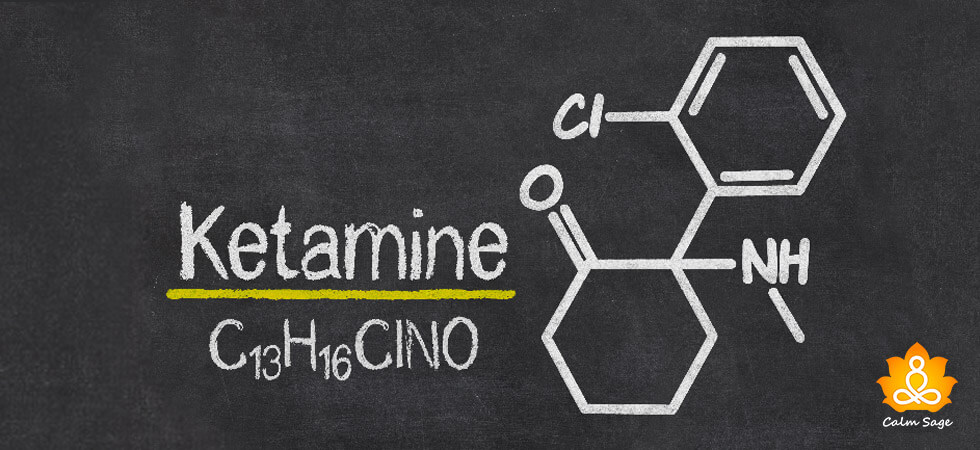Ketamine Infusion Therapy For Depression: Is It Effective? (Things You Should Keep In Mind)

When it comes to treating mental health disorders, there are some methods and approaches that can be considered the first line of defense such as psychotherapy and self-help (or a combination of both).
However, if we talk about the last line of defense, or in other words, medications, antidepressants come to mind. We often fail to understand how or what those antidepressants consist of.
Ketamine that once developed as an anesthetic, was soon discovered to be a helpful aid when it came to treating depression and related disorders. For decades, researchers have been studying the effects of ketamine and other antidepressants in the treatment of depression.
A study that was published in 2000 showed promising results when a patient was treated using ketamine infusion therapy. In a more recent study, (S)-Ketamine infusion was approved by the FDA for treating depression that has not responded to at least two other antidepressants.
In this article, let’s take a look at how ketamine infusion therapy works, its effectiveness in treating depression, and what things you should keep in mind before opting for ketamine infusion therapy.
Ketamine Infusion Techniques
Researchers believe that ketamine treatment is the one that our body responds to the best. However, the techniques when it comes to ketamine infusion often vary depending on the setting and the cost.
Here are some common techniques:
1. Ketamine infusion: Delivered via an IV tube in a clinical setting or a hospital. It lasts for approximately 40 minutes at a time.
2. Intramuscular: Delivered via an injection (in a clinical setting) into either your thigh or arm. It’s quite similar to IV and lasts for 40 minutes as well.
3. Lozenge: Often taken orally, and can be infused either at home or in a clinic setting. This usage must be prescribed either as a primary treatment or as a follow-up to the above methods.
There’s also the nasal method but that technique should be monitored and administered by a physician.
Ketamine Therapy Can Help Address…
Ketamine therapy can help not only address depressive disorders but other mental health disorders as well, including psychiatric conditions. Other conditions ketamine infusion can help with are:
- Post-traumatic stress disorder (PTSD)
- Chronic pain
- Anxiety disorders
- Bipolar disorder
- Obsessive-compulsive disorder (OCD)
- Psychiatric disorders
- Suicidal ideation
Is Ketamine Therapy Effective?
Many antidepressants take somewhere between 4-6 weeks to take effect, however, someone struggling with thoughts of suicide or suicidal ideation may not have the luxury to wait for weeks to let the medication work.
In such cases, ketamine infusion therapy comes in. Ketamine infusion works by producing glutamate, a neurotransmitter in the brain that plays an important role in brain development and functions like learning and memory. Low levels of glutamate can cause depression.
The new neural pathways that glutamate creates allow you to retain positive thoughts and behaviors. Hence, decreasing the symptoms of depression such as helplessness, worthlessness, and suicidal ideation.
But is it effective?
In a study, it was found that 85% of people experienced relief in their symptoms of depression. However, ketamine therapy isn’t a cure alone. There’s always a risk of relapse after an average of 20 days to over three months.
Here’s What You Should Consider
Before you decide on ketamine infusion therapy, there are some things you need to seriously consider. There can be side effects to ketamine therapy so you need to consult with a professional beforehand. Also, if you’re struggling with a mental health condition (other than depression or related disorders), then you might not be considered for this treatment.
Ketamine infusion therapy is given at a dosage that is less than the dose of anesthesia, but the side effects might be the same. Some common side effects of ketamine therapy can be:
- Nausea
- Dizziness
- Drowsiness
- Confusion
- Seeing double
While it is said that ketamine infusion can help treat many conditions, some people should not opt for ketamine treatment. For example, if you’re schizophrenic, have high blood pressure, or if you are an alcoholic, then you should avoid ketamine infusion therapy.
How To Get Started?
Now that you’ve decided to go ahead with ketamine infusion therapy for depression, there are some things you need to take care of before beginning the treatment:
A. Lessen stress. Try to avoid anything stressful before your ketamine treatment. Your mind should be calm and relaxed before the treatment.
B. Listen to the right music. Music can help you relax and will help enhance your experience. Non-lyrical music is recommended, as lyrics can be distracting.
C. Meditate. Try to meditate before starting the ketamine treatment. Mediation can help slow down your racing thoughts and give you a clear mind.
D. Feel free to ask questions. Asking questions about the procedure with your therapist will help you calm your nerves and give you a basic idea of how the treatment will work and help you. Discuss your expectations and your fears with your therapist beforehand.
Your first appointment would likely involve you sharing your symptoms of depression, what treatments you’ve already tried, and what medications you’re currently taking. Generally, the standard treatment involves about 6 ketamine infusions for two to three weeks.
Your first ketamine infusion therapy might last for 40 minutes. Your therapist might also do some basic routine check-ups and offer you an eye mask or headphones to make the treatment more pleasant.
Keep in mind that you might feel light-headed or experience an out-of-body experience, however, it’s part of the treatment so don’t worry much. Once the infusion is done, you might feel some side effects and will be monitored for at least half an hour.
It is highly recommended that you don’t drive after the treatment. Take a cab or ask a friend or a family member to assist you.
After the treatment, all you need to do is rest well and take advantage of your clear and calm brain. Think positive thoughts, create new habits, and let your fears wash away, slowly.
To determine if you’re eligible for ketamine infusion therapy, reach out to your nearest mental health center or consult with your therapist. You can also ask your therapist to review your current and past treatments to determine if ketamine infusion is the right step forward.
If you found this article helpful, feel free to connect with us at info@calmsage.com or let us know your thoughts in the comments below!
Take Care!




















